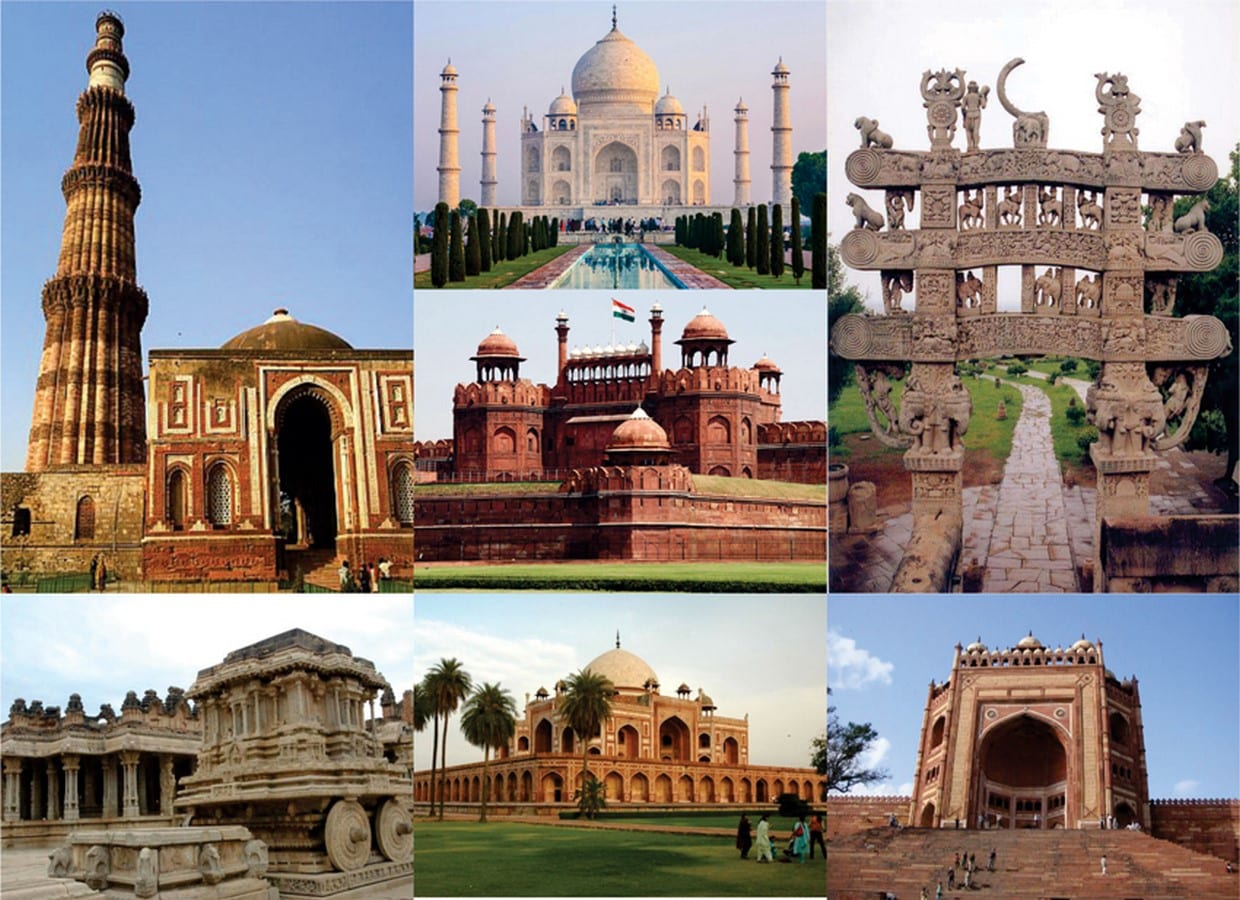Protecting India’s Cultural Heritage

India is a country rich in history and culture. It is home to some of the world’s most iconic archaeological treasures. From the intricately carved temples of Khajuraho to the historic ruins of Hampi, these sites reflect India’s diverse traditions and architectural brilliance. However, climate change poses a significant threat to these invaluable landmarks. Rising sea levels, heatwaves, and extreme weather events are accelerating the deterioration of both movable and immovable heritage. Without immediate protective measures, the preservation of India’s cultural identity is at risk.
The Role of the Archaeological Survey of India (ASI)
Established in 1861, the Archaeological Survey of India (ASI) plays a crucial role in protecting and maintaining the nation’s cultural heritage. The ASI is responsible for 3,698 monuments and archaeological sites deemed of national importance. These sites are safeguarded under the Ancient Monuments Preservation Act of 1904 and the Ancient Monuments and Archaeological Sites and Remains Act of 1958.
The ASI preserves a wide range of heritage, including prehistoric rock shelters, Neolithic sites, temples, forts, and palaces. Each year, the ASI prepares a conservation program aimed at maintaining these monuments while minimizing intervention. This process involves addressing challenges related to construction materials, environmental factors, and structural stability. The ASI operates through 37 Circle offices and one Mini Circle office, primarily located in state capitals. These offices coordinate conservation efforts and environmental development, ensuring that these historical sites remain intact for future generations.
The ASI’s commitment to preserving India’s rich cultural and architectural history is evident in its ongoing efforts to tackle the challenges posed by nature and human activity. By focusing on the integrity of these sites, the ASI aims to maintain their authenticity and significance in the face of modern threats.
Increased Funding for Monument Preservation
In recent years, the funding allocated for the preservation of monuments under the ASI has seen a significant increase. The revenue has risen by 70%, reflecting the government’s commitment to safeguarding cultural heritage. In the fiscal year 2020-21, the allocation was ₹260.90 crores, with an expenditure of ₹260.83 crores. By 2023-24, both the allocation and expenditure rose to ₹443.53 crores.
This increase in funding allows the ASI to implement more comprehensive conservation programs. These programs focus on addressing the various challenges that threaten the integrity of historical sites. The ASI’s efforts include regular monitoring of cultural heritage sites to assess the impact of climate change and other environmental factors. By investing in preservation, the government aims to ensure that these monuments continue to tell the story of India’s rich history.
The ASI’s enhanced funding also supports the adoption of climate-resilient solutions. These solutions involve scientific treatments and preservation techniques designed to protect heritage sites from the adverse effects of climate change. With increased resources, the ASI can better address the challenges posed by environmental degradation and urbanization.
Measures to Combat Climate Change Effects
The ASI has implemented several measures to protect India’s cultural heritage from the adverse impacts of climate change. Regular monitoring of heritage sites is a key strategy. This monitoring helps identify potential threats and allows for timely interventions. The ASI has adopted climate-resilient solutions, including scientific treatments and preservation techniques tailored to specific sites.
One innovative approach involves the installation of Automated Weather Stations (AWS) at historical monuments. In collaboration with the Indian Space Research Organisation (ISRO), these stations monitor critical factors such as wind speed, rainfall, and temperature. This data helps detect damage caused by climate change and informs conservation strategies.
Additionally, air pollution monitoring laboratories have been established at significant sites like the Taj Mahal and Bibi Ka Maqbara. These labs assess air quality and pollutant levels, providing valuable information for preservation efforts. The ASI also coordinates with other government agencies to create comprehensive strategies for preserving cultural heritage sites in response to climate change.
Furthermore, ASI officials actively participate in international workshops focused on disaster management for cultural heritage sites. This collaboration enhances their ability to develop effective disaster management guidelines, ensuring that cultural sites are prepared for potential risks.
Legal and Security Measures for Heritage Protection
To safeguard cultural heritage from commercialization and urbanization pressures, the Indian government has implemented various legal and security measures. These measures include legal provisions, enforcement powers, and enhanced security to protect monuments and archaeological sites.
Under the Ancient Monuments and Archaeological Sites and Remains Act of 1958, the government has established rules to prevent encroachments and misuse of cultural heritage. Superintending Archaeologists have the authority to issue eviction notices under the Public Premises (Eviction of Unauthorised Occupants) Act of 1971, allowing for the removal of encroachments.
The ASI collaborates with state governments and police authorities to maintain the safety of monuments. In addition to regular watch and ward staff, private security personnel and the Central Industrial Security Force (CISF) are deployed at select monuments to enhance protection.
The ASI also follows the National Conservation Policy, 2014, which outlines guidelines for maintaining and conserving monuments. This policy ensures that conservation efforts are adjusted based on available resources. Penalties for actions that damage or misuse protected monuments are enforced under Section 30 of the Ancient Monuments and Archaeological Sites and Remains Act, 1958.
With these legal frameworks, coordinated efforts, and strict security protocols, the government is committed to preserving India’s historical treasures for future generations.
Observer Voice is the one stop site for National, International news, Sports, Editor’s Choice, Art/culture contents, Quotes and much more. We also cover historical contents. Historical contents includes World History, Indian History, and what happened today. The website also covers Entertainment across the India and World.

